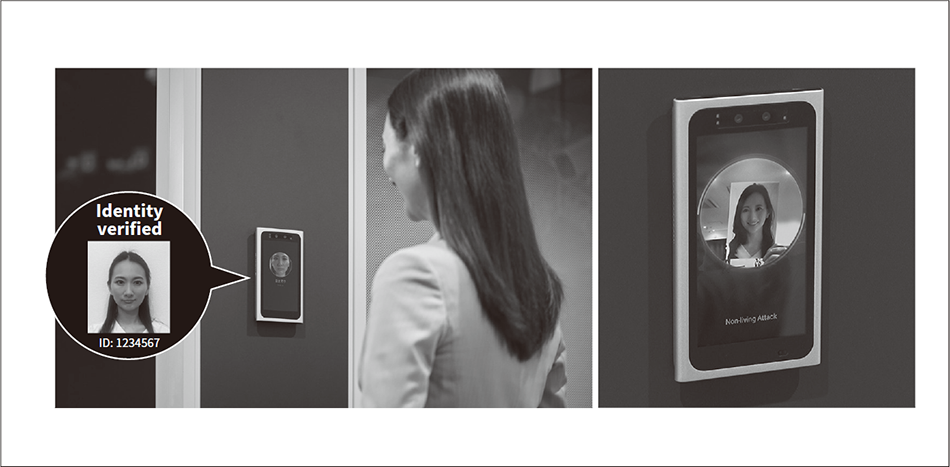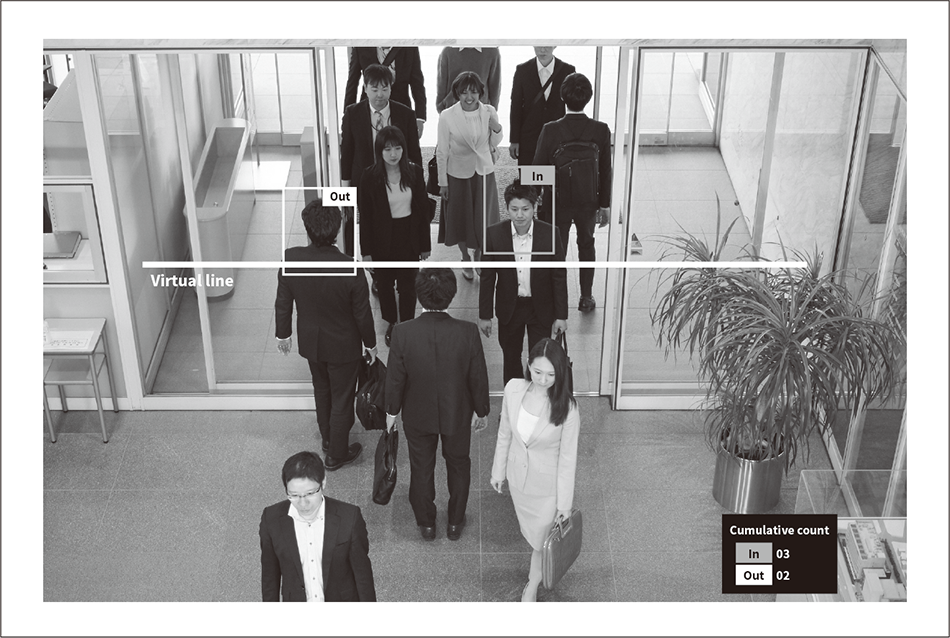Along with the rapid changes to the property sector brought about by factors such as advances in digital technology and the growing diversity of building users over recent years, the coronavirus pandemic has also prompted demand for non-contact methods for moving around inside buildings and using their facilities. Hitachi Building Systems Co., Ltd. utilizes the know-how and infrastructure it has built up through its maintenance business for elevators and escalators to deliver total solutions for buildings that include security camera and access control systems. This includes contracts covering around 200,000 security cameras and service agreements for approximately 3,000 access control systems based on the BIVALE cloud service for building management. This article describes Hitachi Building Systems’ cloud services for building management that are organized around BIVALE together with its vision for a future in which such services will be provided to smart buildings.




Given the changing trends evident in developed societies in particular, which include shrinking workforces, globalization, and a shift in consumer needs from tangible to intangible goods, commercial property is one of a number of sectors where, rather than the straight-forward supply of products (surveillance cameras, access control systems, and so on), the requirement is for solutions that enhance operations and that are designed with users in mind.
Recognizing the demand for better security to prevent the unauthorized disclosure of personal information and the rising awareness of environmental and energy efficiency issues, not least being concerns about global warming, Hitachi Building Systems Co., Ltd. has long supplied solutions that are in tune with developments in wider society through its BIVALE*1 cloud service for building management launched in 2012(1).
To help contain the coronavirus pandemic currently raging around the world, there is an urgent need for services that can enhance the safety and security of security camera systems dedicated to surveillance only and access control systems that involve physical contact with some means of identification. This has led Hitachi Building Systems to look at the adoption of more hygienic touchless mechanisms and resulted in the supply of solutions that make use of image analysis and work in tandem with existing services delivered through BIVALE(2).
According to Fortune Business Insights Pvt. Ltd., the worldwide market for image analysis was worth around USD2.5 billion in 2018, a number that is forecast to reach 12 billion by 2026 with a compound average growth rate of 22%. The two main drivers of this market growth are expected to be investment in security generally and investment by government agencies in anti-terrorist and related measures. While simple applications of image analysis for activity detection made up a large proportion of the market in 2018, the expectations for the future include the ability to determine what a person or object of interest is doing in more detail along with technological progress and growth in the market for vehicle number plate recognition(3).
The key markets in the future will be in the Asia-Pacific region, with strong demand growth expected in China and India where the market was already worth around USD500 million as of 2018. It is also anticipated that small and medium-sized businesses will make greater use of cloud-based image analysis in the future as the associated technologies improve. Other areas where strong growth is expected include the use of image analysis in autonomous driving, industrial automation, and robotics.
While many companies offer services that use image analysis both in Japan and elsewhere, the strength of Hitachi Building Systems lies in its status as a manufacturer of elevators and escalators and its ability to integrate its security camera and access control systems with these products.
By integrating its systems with image analysis services such as those that perform facial recognition or people flow analysis, Hitachi Building Systems is making its elevators, escalators, and access control systems more convenient and transforming their functions into services that take hygiene into account.
While a number of image analysis services are already available on the market, most of these are cloud-based or use large on-premises systems and suffer from problems of slow response and high installation cost.
To overcome this, Hitachi Building Systems has come up with a system that combines a small and low-cost artificial intelligence (AI) edge devices with BIVALE and makes image analysis services easy to install. The service also allows for the continued use of existing assets through interconnection with existing security camera or access control systems as these are equipped with a local-area network (LAN) port or other communication interface (see Figure 1).
The management of personal information is an issue of concern with cloud-based image analysis services. The service addresses this issue by using a system configuration in which facial recognition data is kept on the AI edge devices and not held on the Internet.
Fig. 1—System Block Diagram
 The system can be implemented by adding AI edge devices to existing systems along with a personal computer for collecting user’s facial recognition images.
The system can be implemented by adding AI edge devices to existing systems along with a personal computer for collecting user’s facial recognition images.
Non-touch solution services based on image analysis can be broadly divided into solutions for facial recognition and people flow image analysis respectively. Hitachi Building Systems supplies services that are linked to building equipment such as doors or elevators.
The facial recognition solution is an access control system that uses facial recognition to augment conventional identity verification by smartcard (integrated circuit card), finger veins, or other form of identification. It is suited to door security and security gate applications. The use of facial recognition enables non-touch operation.
The people flow image analysis solution works by counting the number of people in the elevator hall or entrance lobby and can be used for things like controlling elevators based on the number of users or hailing them without having to touch a control panel.
Fig. 2—Access Control Using Dedicated Facial Recognition Device
 The system can be used to control access to server rooms and other high-security areas through the use of a dedicated facial recognition device able to verify whether an image is of an actual person to prevent impersonation using still or moving images.
The system can be used to control access to server rooms and other high-security areas through the use of a dedicated facial recognition device able to verify whether an image is of an actual person to prevent impersonation using still or moving images.
Fig. 4—Counting People Based on Numbers Crossing a Virtual Line
 It is possible to provide an up-to-date count of how many people are in a facility or area by specifying a virtual line in the field of view of an Internet Protocol (IP) camera located at the entrance and counting the numbers of people coming in and out.
It is possible to provide an up-to-date count of how many people are in a facility or area by specifying a virtual line in the field of view of an Internet Protocol (IP) camera located at the entrance and counting the numbers of people coming in and out.
While a wide variety of image analysis techniques will likely be needed to cope with the sector’s increasingly complex requirements, Hitachi Building Systems believes that the techniques suited to use in the smart buildings that it deals with can be divided into the following two categories.
This article has described the new initiatives and future plans of Hitachi Building Systems involving image analysis systems that use security cameras.
Providing new value for people, buildings, and society is part of the corporate mission of Hitachi Building Systems. In this period of major change for office and residential buildings, Hitachi Building Systems pays close attention to the needs of our time as it seeks to create safer and more comfortable environments. By utilizing newly developed digital technologies along with the infrastructural resources provided by management centers and field engineers and the expertise in building facilities it has acquired over time, the company aims to deliver new value, services, and smart building solutions to the people who use these buildings.